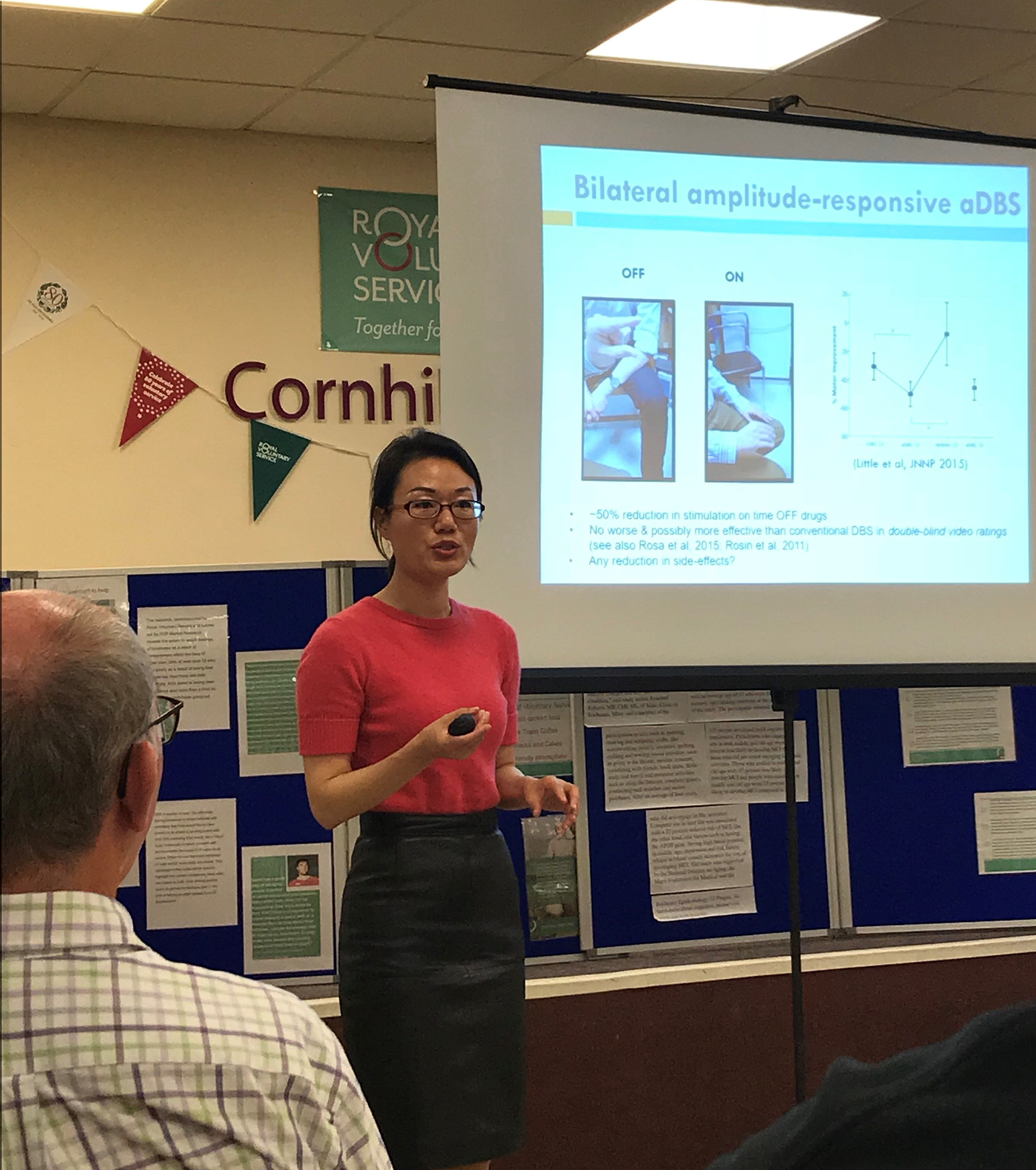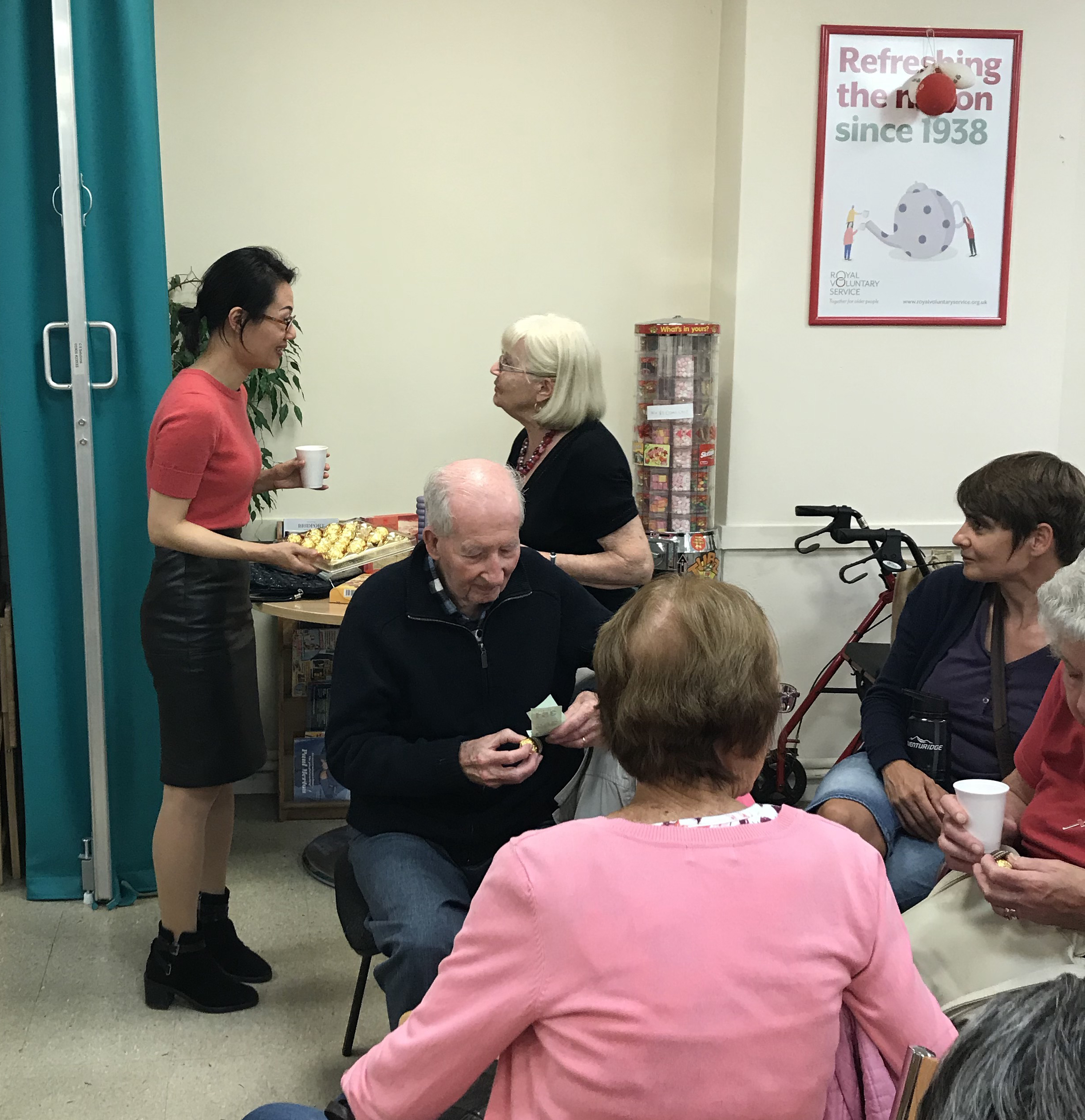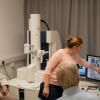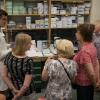Eszter and Huiling take Unit science out to local people affected by Parkinson’s
Eszter and Huiling take Unit science out to local people affected by Parkinson’s
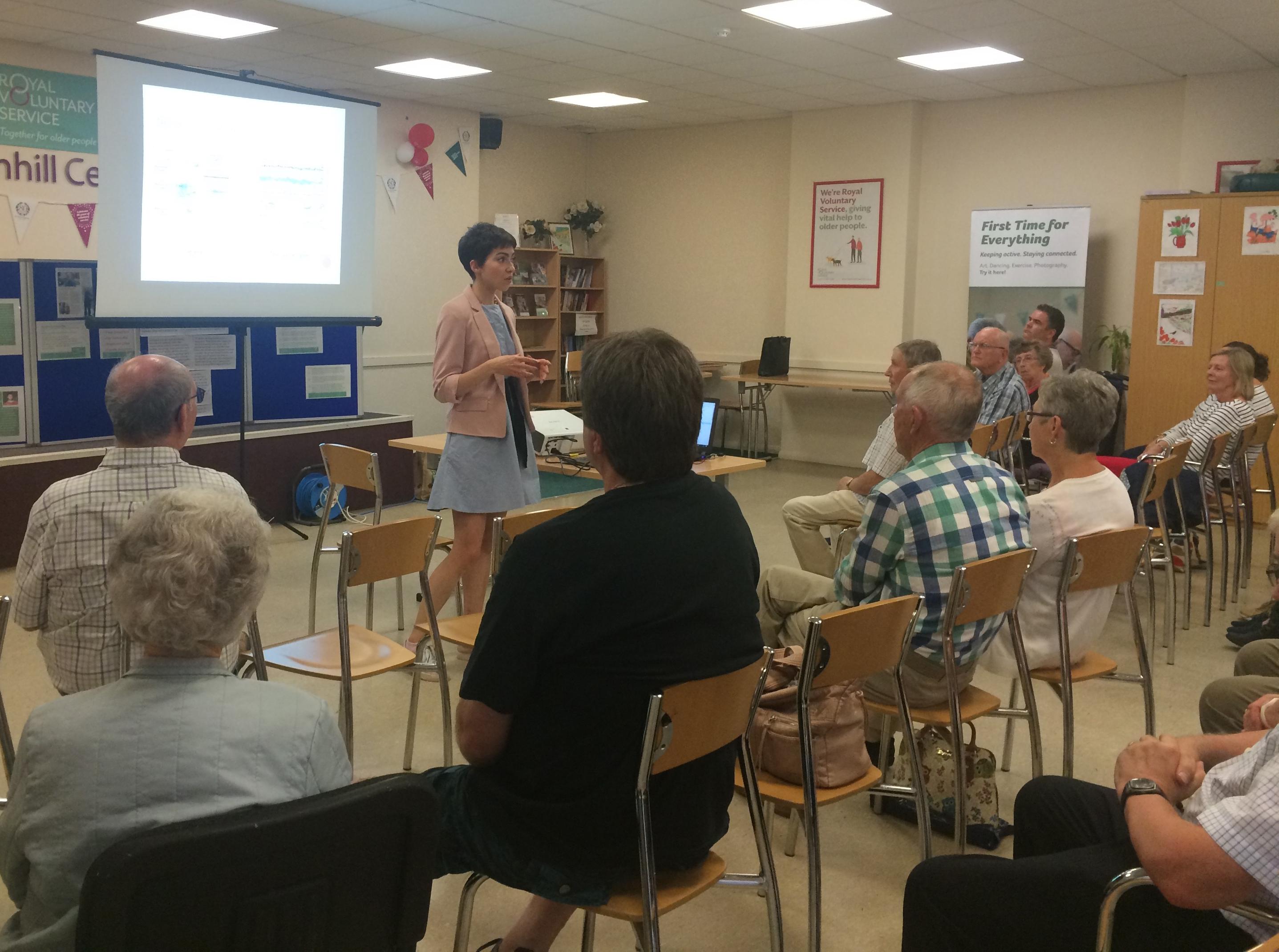
Last week, Unit D.Phil. student Eszter Kormann and Unit Group Leader Huiling Tan went to Banbury to visit about 40 members of a local group of people affected by Parkinson’s, including patients, carers and their friends and families.
The visit began with a talk from Eszter on the role of brain rhythms in Parkinson’s, drawing on her work with patients as well as the use of animal models in Parkinson’s research. Huiling then introduced some of the Unit’s research on brain stimulation for the treatment of Parkinson’s, and shared some exciting new developments for improving these therapeutic approaches. Each of the talks was integrated with a lively discussion session in which the audience’s questions came thick and fast, stimulating further conversations about Unit discoveries made in the clinic and at the lab bench.
Feedback from the audience was overwhelmingly positive, and included: “The presentations were pitched at just the right level for our members, very few of whom have any significant scientific or medical knowledge.” “I was very interested and encouraged to learn that closed-loop Deep Brain Stimulation may be available to some Parkinson’s patients in the future.”
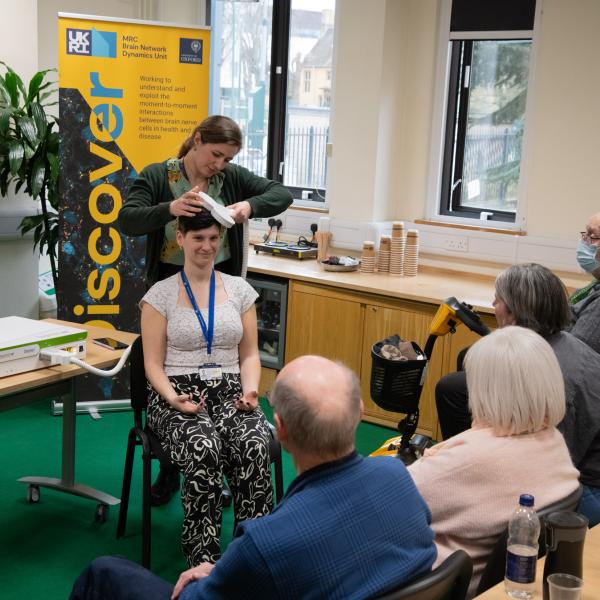
Unit early-career researchers Camille Lasbareilles and Ioana Grigoras demonstrate transcranial magnetic stimulation to members of the Unit’s Patient and Public Advisory Group.
